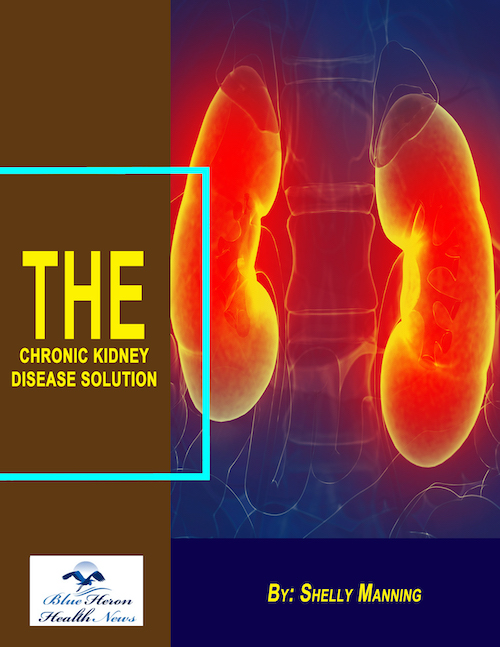
The Chronic Kidney Disease Solution™ By Shelly Manning The information provided in this write-up about The Chronic Kidney Disease Solution, a guide, helps in motivating people to get rid of the chronic problems on their kidneys without using any harmful methods. It eliminates your kidney problem by focusing on the poor health of your gut and inflammation.
How does diabetes management influence diet in kidney disease?
Diabetes exerts a profound effect on diet in kidney disease (especially diabetic kidney disease, or DKD) since both diseases require dietary modification that must be addressed by a fine balance to protect blood sugar control and kidney function at the same time.
This is the way diabetes and kidney disease both affect dietary needs:
???? 1. Management of Carbohydrates (for Blood Sugar)
Reason why: Regulation of blood glucose is needed to slow down kidney damage.
Method:
Choose low-glycemic index carbs (e.g., whole foods, legumes, non-starchy vegetables).
Avoid refined carbs and simple carbohydrates (white bread, sweets).
Spread carbs through the day to avoid spikes.
???? 2. Sodium Restriction (for High Blood Pressure and Kidney health)
Why: Too much sodium worsens high blood pressure, accelerating kidney failure.
Target: <2,300 mg/day (or lower if recommended).
Tactics:
Avoid processed, canned soups, and fast food.
Use herbs and spices instead of salt.
???? 3. Mod-Moderate to Low Protein Diet (for Kidney Load)
Why it’s important: Excessive protein overworks the kidneys, especially in later stages.
Modification:
Early CKD: moderate protein (0.8–1.0 g/kg/day).
Later CKD: might require lower intake.
Balance: Choose top-quality proteins (e.g., eggs, fish, lean poultry) in portion-controlled amounts.
???? 4. Potassium and Phosphorus Control (in Later Stages of CKD)
Why it’s important: Damaged kidneys struggle to regulate these minerals, leading to cardiac and bone problems.
Food suggestions:
Restrict high-potassium foods (bananas, oranges, potatoes, tomatoes) if levels are high.
Restrict phosphorus (from processed foods, soda, dairy) as needed.
???? 5. Focus on Kidney- and Glucose-Friendly, Nutrient-Dense Foods
Non-starchy vegetables, berries, olive oil, and small portions of whole grains help both conditions.
???? Coordination is Key
Both diabetes and kidney disease are usually handled by:
Individualized meal planning with a dietitian.
Lab monitoring (blood sugar, A1C, potassium, GFR).
Medication adjustment (such as insulin, if kidney function alters metabolism).
Summary
Diabetes control in the setting of kidney disease requires a carefully planned diet with close regulation of blood sugar with attention to maintaining kidney function. The equation includes carb control, decreased sodium and protein, and attention to potassium and phosphorus control, especially in advanced stages.
Would you like a sample 1-day meal plan for a patient with diabetes and kidney disease?
A renal dietitian plays a critical role in the management of kidney disease by creating personalized nutrition plans that decelerate disease progression, manage symptoms, and improve quality of life. Here’s what they do:
???? 1. Evaluate Nutritional Requirements
Interpret laboratory values (e.g., blood urea nitrogen, creatinine, potassium, phosphorus).
Evaluate weight, dietary consumption, and comorbid conditions like diabetes or hypertension.
Establish evidence of malnutrition or nutrient deficiencies characteristic of kidney disease.
???? 2. Create Individualized Meal Plans
Tailored to the severity of kidney disease, such plans may comprise:
Restriction of protein: To limit the buildup of uremic toxins.
Limitation of sodium: To manage blood pressure and fluid overload.
Restriction of potassium: To prevent potentially fatal cardiac rhythms.
Restriction of phosphorus: To prevent bone and cardiac complications.
Restriction of fluid: Especially important in patients undergoing dialysis.
???? 3. Provide Continuous Support and Education
Teach label reading, food preparation, and portion control.
Support patients through challenges like loss of appetite or food fatigue.
Educate on the need for compliance to minimize hospitalizations.
???? 4. Collaborate with the Healthcare Team
Work with nephrologists, nurses, and social workers.
Adjust nutrition plans as treatment changes (e.g., starting dialysis).
????️ 5. Prevent and Manage Complications
Reduce risk of hyperkalemia, bone disease, fluid overload, and malnutrition.
Help manage comorbid conditions like diabetes, which worsen kidney damage.
Briefly: A renal dietician plays an essential role in making it possible for patients with kidney disease to enjoy safe and sustainable food that preserves kidney function and improves outcomes.
Would you prefer a renal-friendly sample meal plan or a chart of nutrients for some stages of kidney disease?

The Chronic Kidney Disease Solution™ By Shelly Manning The information provided in this write-up about The Chronic Kidney Disease Solution, a guide, helps in motivating people to get rid of the chronic problems on their kidneys without using any harmful methods. It eliminates your kidney problem by focusing on the poor health of your gut and inflammation.